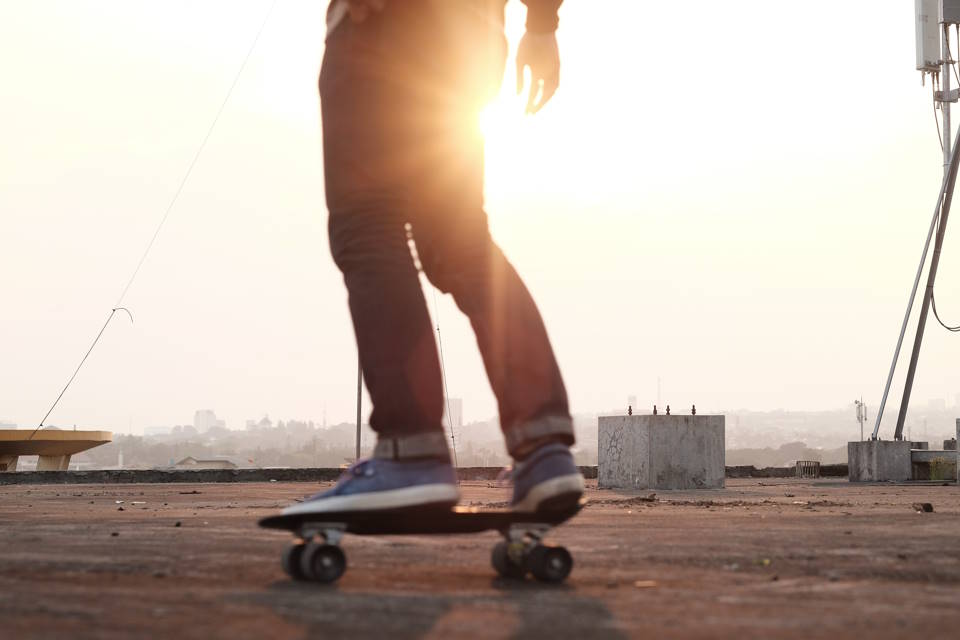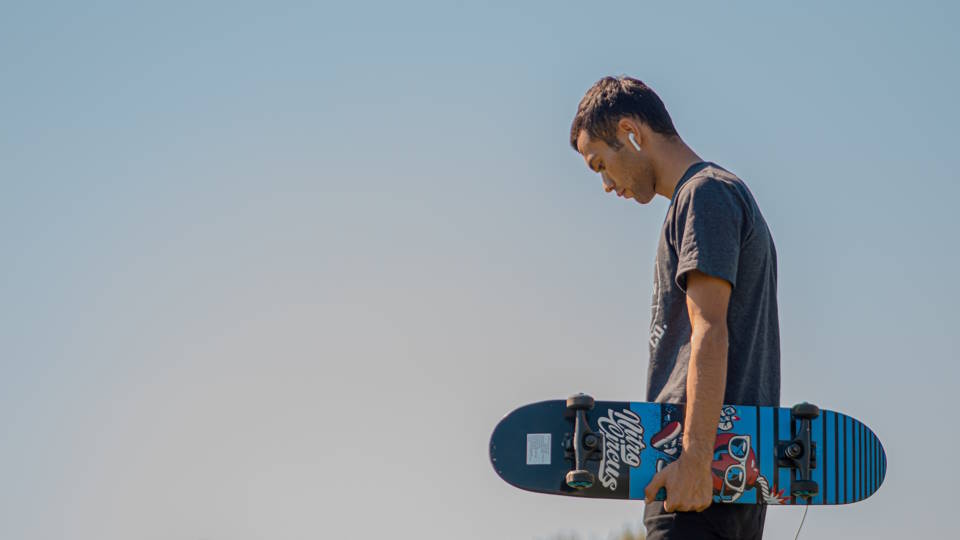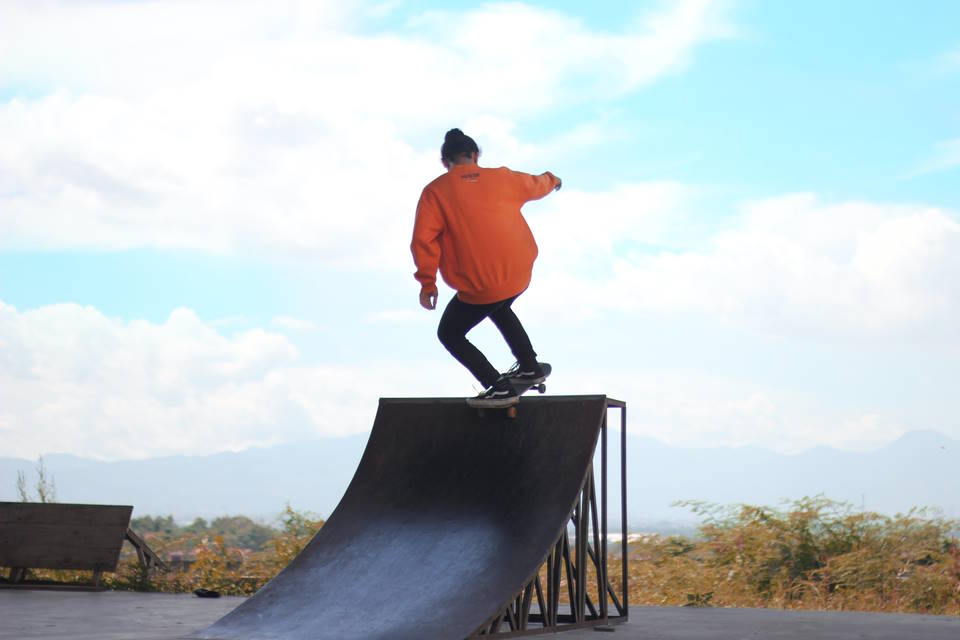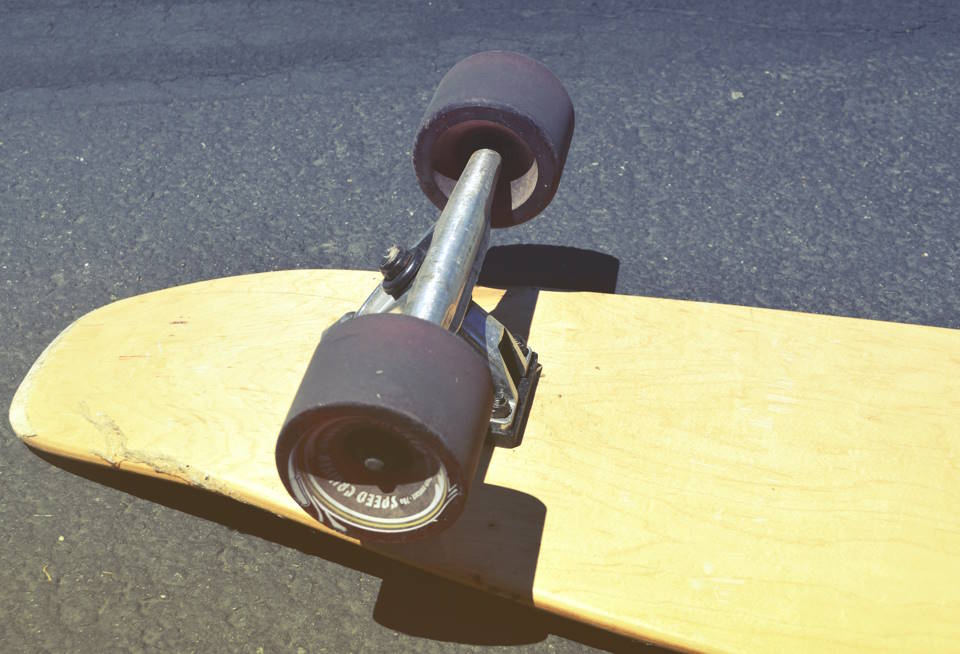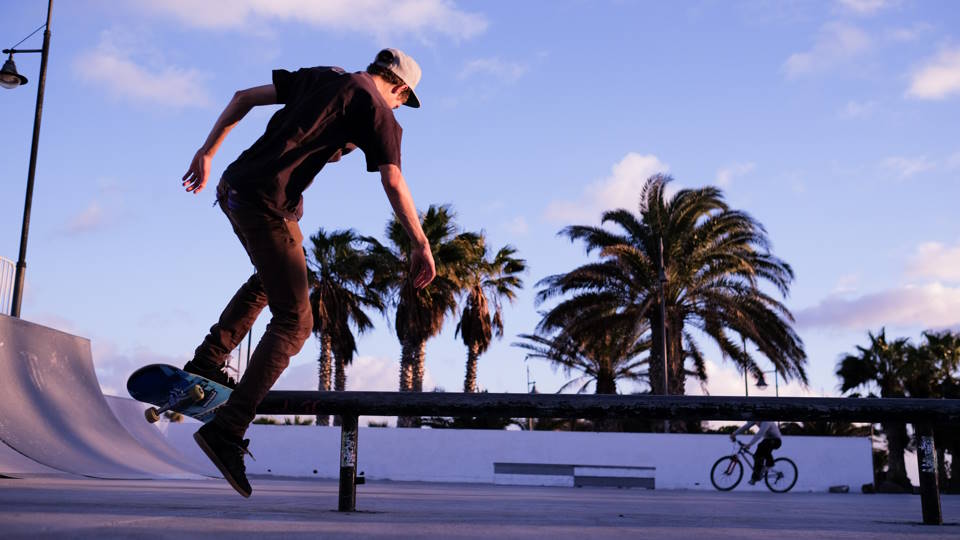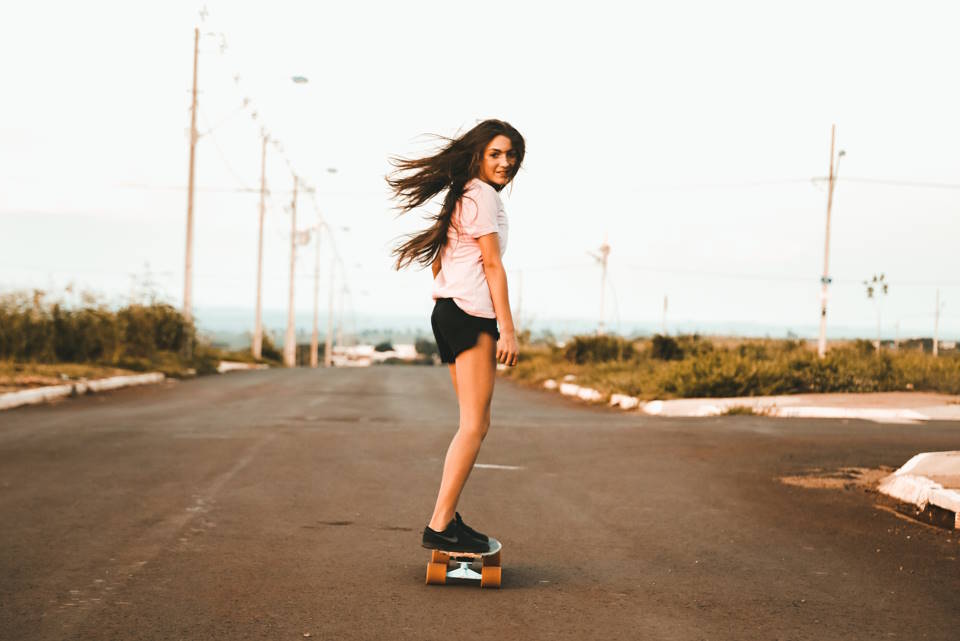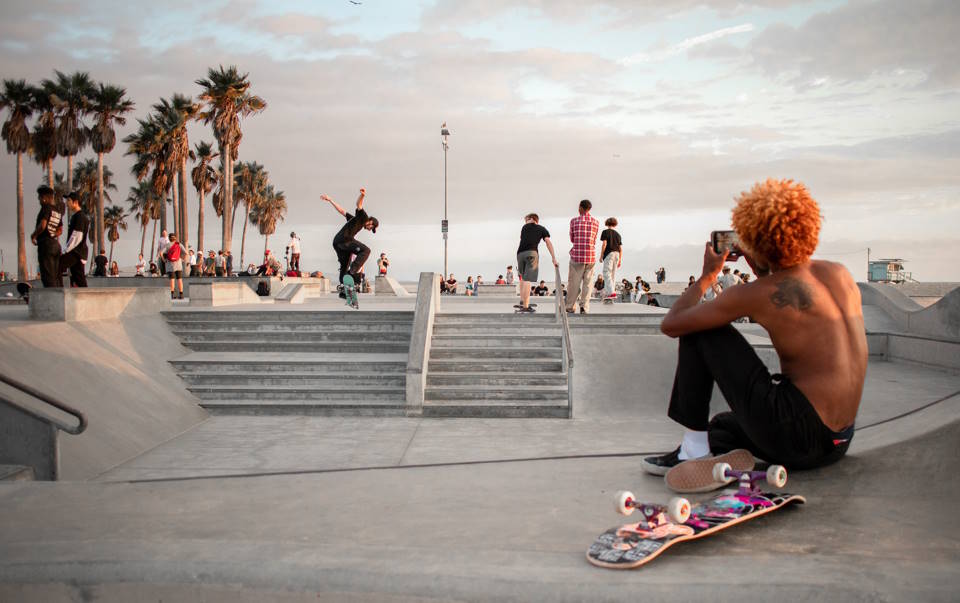Welcome, skateboarding enthusiasts! Are you eager to learn how to stand on a skateboard without falling? Do you want to know how to position your feet and bend your knees properly? Do you struggle with looking awkward while skateboarding? If your answer is yes to any of these questions, then continue reading! We will provide you with helpful tips and tricks on how to stand on a skateboard, the proper way of doing it, and how to avoid injuries while practicing. So, let’s get started and make your skateboarding experience fun and safe!
Introduction
Standing on a skateboard is the first step in becoming a skateboarder. It may seem like a simple task, but it requires proper technique to prevent falls and injuries.
Here are some tips on how to stand on a skateboard:
- Choose the right stance: Before standing on a skateboard, you need to determine which foot you will use to push and which foot will be at the front of the board. Most people use their left foot to push, and their right foot will be at the front of the board (regular stance). However, some people use their right foot to push, and their left foot will be at the front of the board (goofy stance).
- Place your feet on the board: Once you have determined your stance, place your back foot on the tail of the skateboard and your front foot near the middle of the board. Your toes should be pointing towards the edge of the board, and your feet should be angled slightly towards the nose of the board.
- Get into an athletic stance: Bend your knees slightly and raise your heels, so your weight is on the balls of your feet. Keep your back straight and your arms out for balance. This position will allow you to absorb any shocks and maintain stability on the board.
Is There a Proper Way to Stand on a Skateboard?
When it comes to skateboarding, there is a proper way to stand on a skateboard. Proper stance is crucial for maintaining balance and control on the board.
Here are some tips on how to achieve a proper stance:
- Foot placement: Place your front foot over the front bolts of the skateboard while keeping your back foot on the tail of the board. Your feet should be at a slight angle, with your front foot angled towards the nose of the board and your back foot angled slightly towards the tail of the board.
- Shoulder positioning: Position your shoulders parallel to the board. This means that your shoulders should be aligned with the length of the board, not twisted to one side.
- Bend your knees: Keep your knees slightly bent to maintain balance and stability on the board. A slight bend also allows you to absorb any shock or bumps while riding.
By following these tips, you can achieve a proper stance on a skateboard which will help you ride more comfortably and with greater control. Remember, practice makes perfect, so keep at it and soon you’ll be cruising down the street like a pro!
How Do You Stand on a Skateboard Without Falling?
If you want to learn how to skateboard, the first and most important thing to learn how to do is to stand correctly. It might sound simple, but if you don’t know how to do it, you will have a very difficult time trying to ride your skateboard, let alone do tricks. One of the biggest fears of a beginner skateboarder is falling, but if you know how to stand on your board properly, you can significantly reduce your chances of losing your balance and taking a tumble.
The first step in standing on a skateboard without falling is to make sure you are wearing the proper equipment. This means wearing a helmet and protective pads, including knee and elbow pads, and wrist guards. These will help protect you from injury and give you the confidence to try new things on your board.
- Once you have your gear on, it’s time to actually stand on your skateboard. Start by placing your skateboard on a flat surface like a parking lot, driveway or basketball court. You want to make sure there are no pebbles, twigs, or rocks in the way as these could cause the board to stop or shift suddenly, causing you to lose your balance.
- Now, stand with your feet shoulder-width apart, and place your front foot in the center of the skateboard deck with your toes pointed towards the nose of the board. Your back foot should be placed on the tail of the skateboard with your toes hanging slightly off the edge of the board.
- Keep your knees bent slightly and your focus straight ahead. Make sure to keep your weight distributed evenly between your front and back foot. This will give your board the stability it needs to keep you balanced and prevent you from falling.
It’s important to remember that balance is key when learning how to ride a skateboard. Keep practicing and don’t be discouraged if you fall a few times in the beginning. Falling is a natural part of learning how to skateboard, and it’s just a matter of getting back up and trying again. With time, patience, and practice, standing on a skateboard without falling will become second nature to you, and you’ll be ready to move on to more advanced techniques and tricks.
How Should Your Feet Be Placed on a Skateboard?
Skateboarding is a popular sport that requires skill, balance, and practice. One of the essential elements in skateboarding is the correct positioning of feet on the skateboard. Proper foot placement on a skateboard is crucial, as it determines how well you can control the board and perform tricks. Therefore, it is crucial to understand how feet should be placed on a skateboard to enhance your skateboarding experience.
When standing on a skateboard, your feet should be placed parallel to each other on the deck. Generally, most skateboarders use the “duck stance,” where the toes of the leading foot are pointing towards the nose of the board, and the toes of the trailing foot are pointing towards the tail of the board. This stance allows you to shift your weight and maintain balance while riding.
- A key point to note is that your feet should be placed evenly on the board. It would help if you didn’t put more weight on one foot than the other, as this will make it difficult to balance correctly. The weight distribution on both feet should be equal to ensure that your body remains centered over the board.
- Another crucial factor to consider is the position of your heels and toes. Your heels should be towards the back of the board, while your toes should be towards the front. This position ensures that you have a good grip on the board and that it remains stable while riding.
The width of the stance largely depends on the rider’s preferences and style. Most skateboarders prefer a shoulder-length distance between feet. However, some may prefer it narrower or wider. Finding your proper stance width is essential for comfort, balance and it can vary depending on the type of riding you do.
| Standard Stance | Goofy Stance |
|---|---|
| In a standard stance, your left foot is positioned towards the board’s nose, while your right foot is positioned at the board’s tail. | In a goofy stance, it’s the opposite, with the right foot at the nose and the left foot at the tail. |
Do You Bend Your Knees on Skateboard?
Skateboarding has become one of the most popular sports over the years. It is enjoyed by many young and old, beginners and professionals alike. Whether you are trying to learn the basics or ready to take your skills to the next level, there are a few things to consider. One of these crucial things is the way you stand on your skateboard.
When it comes to skateboarding, it is important to have a proper stance. An essential component of this stance is the position of your knees. The question is, do you bend your knees on the skateboard? The answer is yes.
Bending your knees on a skateboard is essential for maintaining balance and stability. It allows you to absorb bumps and maintain control over your board. Keeping your knees slightly bent also ensures that your weight is distributed evenly throughout your body, which is crucial for performing tricks and maneuvers.
- Make sure that your feet are shoulder-width apart. This is the perfect distance for ensuring stability and balance on the board.
- Keep your knees slightly bent. This makes it easier to maintain balance while riding and executing tricks.
- Position your front foot facing forward and your back foot perpendicular to the board. Your front foot should be over the hardware screws closest to the nose of the board. Your back foot should be over the screws closest to the tail of the board.
How Do You Not Look Awkward When Skateboarding?
Skateboarding is a popular sport and has a lot of benefits for both physical and mental health. But if you’re a beginner, it can be a bit intimidating to get on the board without looking awkward. However, with practice and some helpful tips, you can find your balance and begin to enjoy the ride.
Firstly, it’s essential to get comfortable on the board. Stand with your feet shoulder-width apart and point them towards the nose and tail of the skateboard. Make sure your weight is evenly distributed on both feet, and your knees are slightly bent. This position will give you stability and control over the board.
- Make small movements while pushing yourself forward
- Keep your arms out for balance
- Lean forward slightly and keep your eyes on the path ahead of you
As you begin to ride the skateboard, start with small movements and focus on pushing yourself forward gently. Leaning forward slightly can also help keep your balance, but make sure you keep your eyes on the path ahead of you. It’s also essential to keep your arms out to assist with balance and avoid falling off the board.
Another critical aspect of not looking awkward on a skateboard is to relax and stay loose. Tensing up can impede your movements and make it harder to control the board. Take deep breaths and remind yourself that it’s okay to make mistakes. Practicing regularly will also help you build confidence and improve your skills over time.
| Do’s | Dont’s |
|---|---|
| Start with the basics and practice regularly | Rush into advanced tricks before mastering the basics |
| Wear protective gear, including a helmet, knee pads, and elbow pads | Skate in dangerous areas or without protective gear |
| Listen to your body and take breaks when necessary | Push yourself too hard and risk injury |
How Can I Practice Skateboarding Without Getting Hurt?
Skateboarding can be a thrilling and exciting sport, but it can also be dangerous if proper care is not taken. There is a high risk of getting hurt while skateboarding, especially if you are new to the sport. So if you’re looking to practice and improve your skateboarding skills without getting hurt, here are some tips and tricks you should follow.
- Wear Protective Gear: The first and most important thing you should do is to wear protective gear. This includes a helmet, knee pads, elbow pads, and wrist guards. These will protect you from getting injured in case you fall or lose your balance.
- Start Small: It’s important to start small and not attempt any risky tricks until you have mastered the basics. Start with simple tricks like riding and turning and work your way up to more complex maneuvers.
- Practice in a Safe Environment: Find a safe and secure environment to practice your skateboarding skills. A skate park is the best option, but if you don’t have access to one, try practicing in a quiet residential area with smooth pavement.
Another tip is to practice with a friend who has more experience than you. They can offer guidance and advice on how to improve your skills and avoid getting hurt. Remember that practice makes perfect, so be patient and keep practicing until you feel confident in your skating abilities.
| DO’S | DON’TS |
|---|---|
|
|
Skateboarding is a fun and exciting sport that can be enjoyed safely with the proper precautions. Follow these tips on how to practice skateboarding without getting hurt, and you’ll be on your way to becoming a skilled skateboarder in no time.

